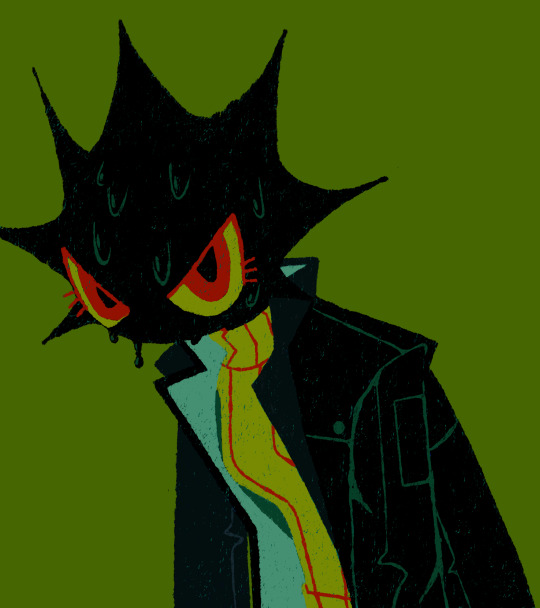#Sea Urchin...
Explore tagged Tumblr posts
Text

#animal crossing#nintendo#switch#new horizons#acnh#nintendo switch#funny#lol#humor#memes#blathers#fish#sea urchin#animal crossing new horizons#villagers#ac
4K notes
·
View notes
Text

dr trinity santos your rise to blorbo status in my head is crazy. can i put you under a microscope and make everyone your best friend
#my doodles#trinity santos#the pitt#dr santos#she’s a prickly pear to me…a sea urchin#spiky with soft insides#me when i see a misunderstood loser girl failure with no friends and no game. oh you are so endearing and destined to be my fave#melissa king#dr melissa king#dennis whitaker#my little pony
1K notes
·
View notes
Text
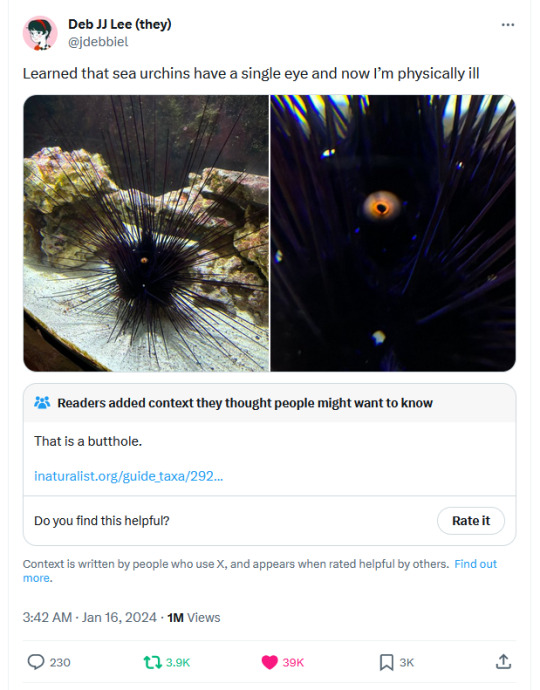

#peak twitter community note lol#twitter#memes#community notes#sea urchin#marine life#tweets#humour#humor#animals#there are many benefits to being a marine biologist
11K notes
·
View notes
Text






It's giving balanced ecosystem vibes. Very mindful, very demure, and cutesy. 🦦 ✨ A healthy sea otter population sustains and protects a thriving kelp forest ecosystem.
#monterey bay aquarium#sea otter awareness week#just add otter!#sea otter teeth can turn purple if they eat a lot of sea urchins by the way#the more you otter know
2K notes
·
View notes
Text
Wet Beast Wednesday: sea urchins
As I continue the slow grind of covering every living group of echinoderms for this series, it was inevitable that I would eventually encounter the only echinoderm I've actually studied. Sea urchins are among the most iconic of marine invertebrates, but many people just think of them as part of the scenery. I'm here to show you that there's more to these creatures than just being spiny lumps on a rock.

(Image: a purple sea urchin (Strongylocentrotus purpuratus) being held in someone's hand. It is a round, globular animal with a dark purple color. Light purple spines emerge from it all over its body, with the longest being around the middle. End ID)

(image: a long-spined sea urchin (Diadema savignyi). It is a black sea urchin with spines longer than its diameter. End ID)
Urchin is an old-fashioned word for hedgehog, and sea hedgehog is a fitting name for these round, spiny animals. Sea urchins tend to be fairly small, with a diameter of 3 - 10 cm (1 - 4 in), though some species have very long spines that make them seem larger. The main body of an urchin is round and enclosed in a (usually) hard shell called a test made of calcium carbonate. The test is covered with a slayer of skin and muscle that controls the spines and small, pincer-like structures called pedicellaria. Within the test are the internal organs. As with other echinoderms, sea urchins are radially symmetrical as adults, with five segments arranged around the center like pizza slices. The two main body holes are found on the top and bottom of the animals where the segments converge. At the bottom is the mouth and at the top is the anus. Each segment also has a hole near the anus used to release gametes and one will have a larger pore called the madreporite, which is used to control the amount of water within the urchin's body. The mouth is a unique structure known as Aristotle's lantern, consisting of five tooth-like structures (one for each body segment) that interlock together and sharpen themselves. Behind the teeth is a rasping tongue.

(image: a close-up of an urchin's mouth, showing the Aristotle's lantern. It is a hole surrounded by a fleshy lip. Five spade-shaped teeth are emerging from the edge of the hole. End ID)
Internally, most of the body is taken up by the digestive tract and water vascular system. The digestive system lacks a stomach, with the esophagus attaching directly to the small intestine. The digestive tract forms a loop as it passes through the body. The water vascular system uses seawater to form hydrostatic pressure that moves the tube feet. All starfish, urchins, and sea cucumbers have tube feet, small, transparent, tentacle-like structures they use for movement. Tube feet are hollow and retracted into pores on the skin normally. To be used, they have to be inflated with water, which makes them stick out of the body, where they can be controlled with muscles. Tube feet end in suction cups that can be used to grab into structures around them. Seawater drawn in through the madreporite serves as the source of pressure needed for the tube feet to function. In urchins, tube feet cover the body and are used for locomotion, moving food to the mouth, and moving objects on or off the body. The main body cavity is filled with circulatory fluid that uses special cells to move oxygen and nutrients around the body. The nervous system is simple, consisting of a central nerve ring around the esophagus that branches into nerves that connect to the rest of the body. Urchins have no eyes (except for the family Diadematidae, which have eyespots), but are sensitive to light. The gonads are usually small, but during mating season they can swell to fill much of the body cavity.

(Image: a drawn diagram showing a cross-section of a sea urchin, with the different organs and body parts labeled. End ID. Source)
Sea urchins are found in oceans worldwide, from intertidal zones to the deep sea and the tropics to the poles. They are bottom-dwellers who feed primarily on algae, which they scrape up with their teeth. However, they will also take a variety of food, including carrion, aquatic plants, and other slow-moving or sessile animals like sponges, polyps, bivalves, worms, and sea cucumbers. Urchins can play a key role in regulating algae populations through their ecosystems, but they also rely on predators to keep from overeating necessary algae. Famously, California's kelp forests were almost destroyed by urchins eating the kelp after their primary predator, sea otters, were driven to near extinction. Urchin's primary defense against predators is their hard tests and spines. As most of the edible portion of the urchin is within the test, predators have to get through both layers of defense first. The spines are hollow and each can be moved independently of each other, allowing them to be positioned toward a threat. Many species contain venom within their spines as an added layer of defense. This venom is rarely dangerous to humans, but can cause swelling and painful reactions. Another layer of defense is the pedicellaria, which are good at removing small animals and parasites from the skin. The flower urchin, Toxopneustes pileolus, has modified its pedicellaria into flower-like structures that extend beyond the spines and can deliver a sting that can be fatal to humans.

(Image: a flower urchin. It is a pinkish urchin covered with flower-like structures that extend to the length of the spines. It has placed some bits of shells on top of it. End ID)
Sea urchins possess distinct males and females, though the differences are internal, making it impossible to tell which is which based on visual examination. During mating seasons, the gonads swell as they generate gametes. Urchins tend to reproduce in groups at synchronized times (possibly correlated with the phases of the moon in shallow-water species) to maximize the possibility of fertilization. When ready to mate, the gametes are squeezed to empty their contents through the genital pores and into the water column. Sperm must find egg in the water to fertilize it. Most sea urchins provide no parental care, but in some species, the female will retain the eggs in her spines to protect them. The eggs hatch into bilaterally symmetrical larvae called plutei that drift with the plankton. As they develop, a section of the larvae will develop into a radially symmetrical adult rudiment. This piece will eventually break off and become the juvenile urchin while the rest of the larva dies. Because echinoderms start out as bilaterally symmetrical larvae, we can infer that they developed from bilaterally symmetrical ancestors and the radial symmetry of adults is a more recent development.

(image: a series of photos showing the embryological development of a sea urchin from a single cell to a cluster of cells, to a bell-like structure, to growing several arms, to the eventual adult developing and breaking off. End ID. Source)
Fossils show that the oldest sea urchins had large, club-like spines that they walked on, with the modern spines being a later development. Most of those urchins died out with the dinosaurs, leaving the pencil urchins of order Cicaroida as the only living members. All other living urchins are Part of the clade Euechinoidea. Amongst them, there are still some oddballs, known as the irregular urchins of clade Irregularia. These urchins have moved away from radial symmetry, with less symmetrical segments and the anus and mouth moving from being on the top and bottom to being on the sides in the heart urchins. Heart urchins have gone from bilateral symmetry to radial symmetry and are now going back to bilateral symmetry. Heart urchin mouths don't have an Aristotle's lantern. Instead, they use strands of mucus to capture food and cilia to pull the strands back inside. Sand dollars, also known as sea cookies or sea biscuits, are also in this clade. These are flattened urchins with short and very fin spines that resemble velvet. They are burrowers who spend much of their time buried under sand and as such are rarely seen alive. The name sand dollar comes from their tests, which are similar to old dollar coins and can often be found washed up on beaches. While still radially symmetrical, sand dollars also have a secondary form of bilateral symmetry, with a distinct front and back end that often look different. Irregular sea urchins also tend to have fewer gonads and associated pores than regular sea urchins.

(image: a red pencil urchin (Heterocentrotus mamillatus) nestled among coral. Instead of spines, it has a series of long, thick, red clubs. End ID)

(image: a purple heart urchin (Spatangus purpureus). It is an urchin elongated on one direction and with a few rows of long spines amongst short ones. On the surface facing the camera is a large hole that could be the mouth or the anus. End ID)

(image: a group of irregular sand dollars (Dendraster excentricus) partially buried in the sand. They are round, flat animals with a velvety covering of tiny spines. The are sticking out of the sand. End ID)
Sea urchins have been known to humans for as long as people have lived near the ocean. Stings can occur when people step on them and can cause pain and irritation, but are rarely medically significant. That being said, some people can have allergies to the venom, which could be a big problem. Spines left in the wound should be removed, as they can continue injecting venom. Urchins are a food source for people around the world, specifically the gonads, which are the only meaty part of the animal. The gonads are often marketed as roe or corals and can be eaten raw or cooked. Urchins are also used as a model organism in embryology due to the interesting and well-studied nature of their larval development. Urchins are vulnerable to pollution, habitat loss, and over-predation. Ocean acidification due to climate change poses a major threat to them, as it reduces the quality of their tests.

(image: tow sea urchins served as food. They are upside-down with the bottoms removed. The gonads are visible within as five orange, spongy structures that take up most of the body cavity. End ID)
#wet beast wednesday#sea urchin#urchin#sea urchins#echinoderms#invertebrates#invertiblr#sand dollar#heart urchin#pencil urchin#marine biology#marine life#biology#zoology#ecology#animal facts#informative#educational#image described
812 notes
·
View notes
Text

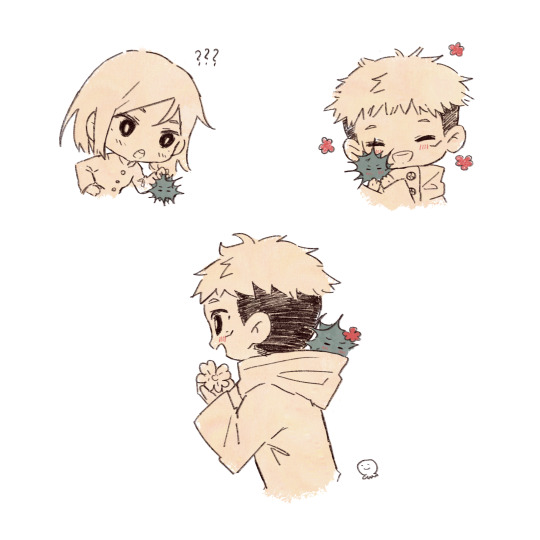
Megugu as a sea urchin
#jujutsu kaisen#itafushi#yuji itadori#megumi fushiguro#nobara kugisaki#sea urchin megumi!!!!!!!#just a silly doodle
4K notes
·
View notes
Text
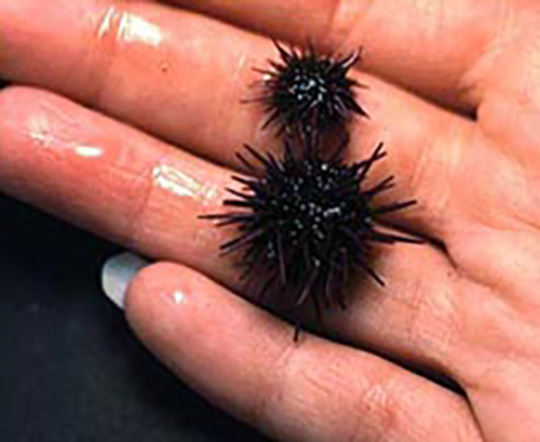
lets be spiky with mama
546 notes
·
View notes
Text

some fish I have crafted with my digital tools.... for an upcoming project called Fishy Fiesta!!!
I'm working with @/Hecco and @/Yirmiris on twitter to make a mod that adds a bunch more ocean life to your worlds, as well as overhauling fishing to be more rewarding and fun!!
#minecraft#mineblr#minecraft mods#modded minecraft#pixel art#mc#fishy fiesta#fish#urchin#sea urchin#carp#june sucker#rainbow trout#fishing
2K notes
·
View notes
Text


Wolf eels enjoying sea urchins
#animal#picture#fish#Anarhichadidae#wolf eel#Ray-finned fish#sea urchin#echinoderm#invertebrate#aquatic animal#aquatic#live animal#animals hunting#face
832 notes
·
View notes
Text

horn sharks in love ^_^ get it here as a sticker!
#sharks#i love sharks#shark week#shark#ocean#my art#art#illustration#artists on tumblr#horn shark#california wildlife#sea urchin
661 notes
·
View notes
Text









Woe, Cookie Run Kingdom ships be upon ye
#moonbladeart#cookie run kingdom#clotted cream cookie#eclair cookie#clotted cream cookie x eclair cookie#crunchy chip cookie#wildberry cookie#wildberry x crunchy chip#moonlight cookie#sea fairy cookie#sea fairy x moonlight#cocoa cookie#mint choco cookie#cocoa x mint choco#white lily cookie#elder faerie#white lily x elder faerie#street urchin cookie#caramel choux cookie#street urchin x caramel choux#cotton cookie#sherbet cookie#cotton x sherbet#chili pepper cookie#rye cookie#chili pepper x rye#espresso cookie#madeleine cookie#espresso x madeleine#my art
504 notes
·
View notes
Text
Today is Wet Beast Wednesday!
Today’s wet beast is: Sand Dollar


Olive’s Wet Beast Fact: Contrary to popular belief, Sand Dollars aren’t a seashell, snail, or crustacean! They are a type of fucking Sea Urchin. Can you believe that shit?
Stay tuned for more Wet Beast Wednesdays!
#sand dollar#wet beast wednesday#sea urchin#sea shells#fish#marine biology#aquarium#deep sea#oceanposting#sea creatures#ocean#echinoderm#wet beast#science#marine life#sea life#meme#funny#sand dollars
2K notes
·
View notes
Text

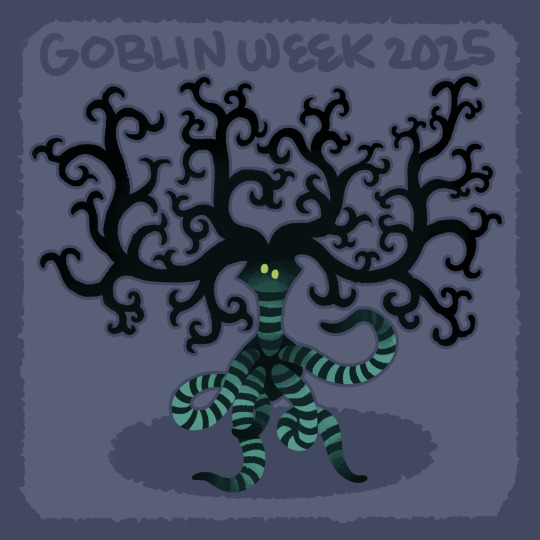
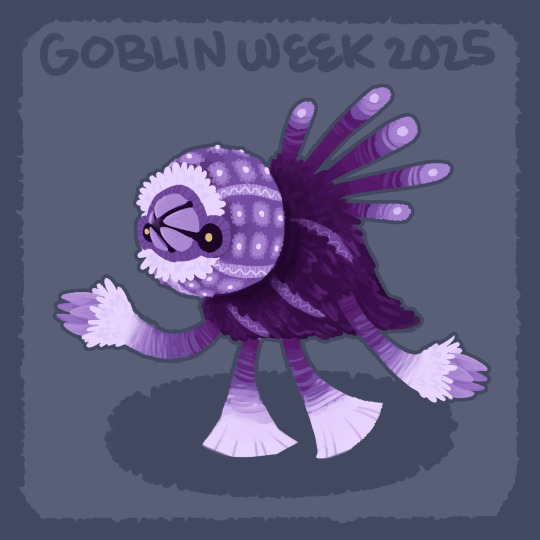
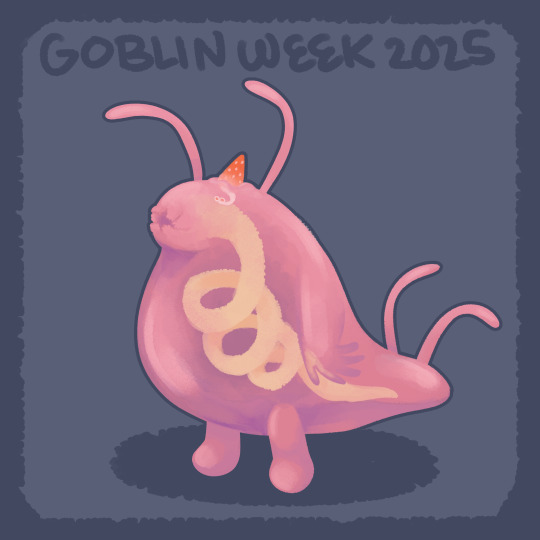
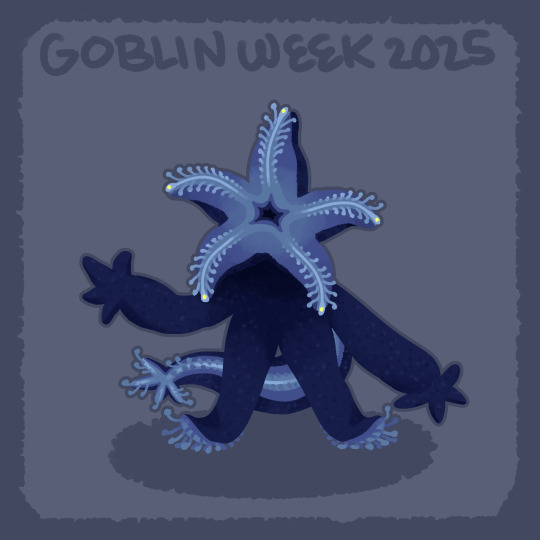
GOBLIN WEEK 2025!! I knew I was going to have a busy week so I tried to think of a good theme for only five days, so these are Echinoderm goblins! :)
#my art#goblinweek#goblin week 2025#goblin week#goblins#crinoid#brittlestar#basketstar#sea urchin#sea cucumber#sea pig#seastar#starfish#echinoderm#bonus parasitic snail- yes the snail is in control#creature design#character design
489 notes
·
View notes
Text
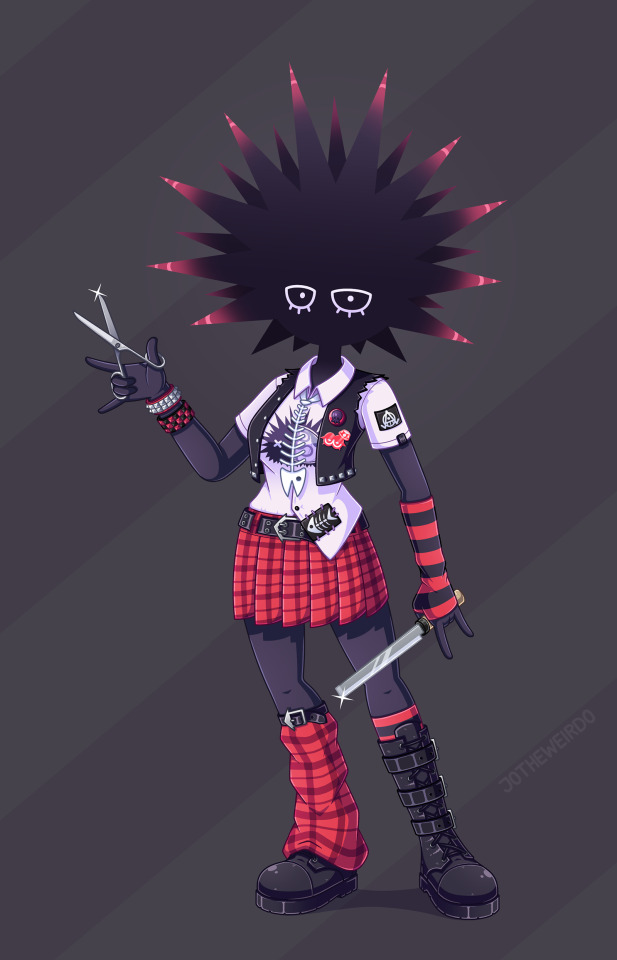
Sea Urchin Barber ✂️
An idea I had back in early 2021 for a Splatoon 3 NPC who would allow the player to swap hairstyles quickly.
#digital art#illustration#original character#splatoon 3#oc#splatoon fanart#splatoon#splatoon oc#splatoon art#sea urchin#monster girl#barber#character design#character art#punk rock
292 notes
·
View notes

